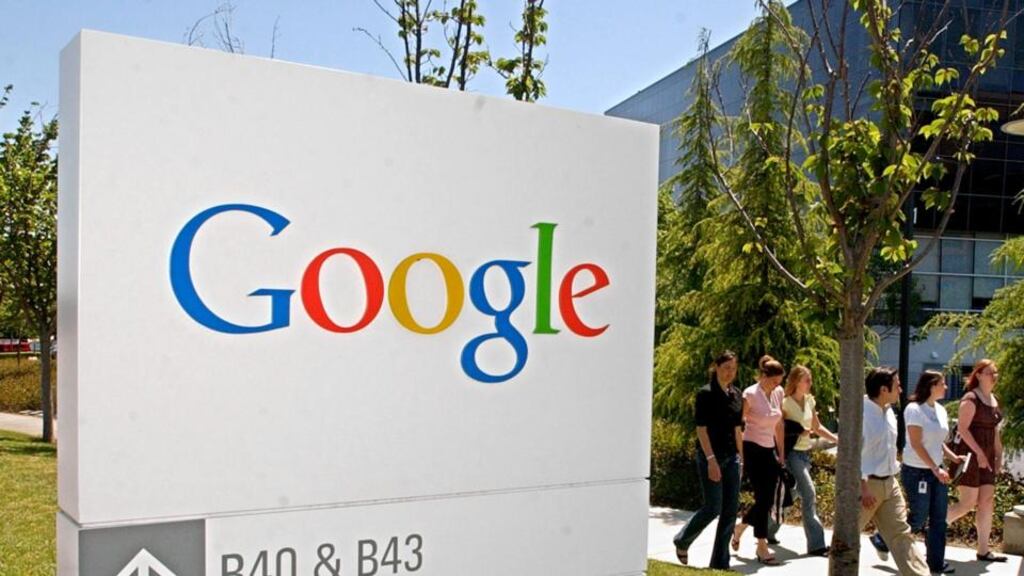Google has regularly claimed it cannot be held liable for what is contained in its search results, as it is simply creating a snapshot of content that is elsewhere on the internet.
This “caching defence” is cited within the EU’s e-commerce directive law and allows for internet service providers (including search engines) to not be held liable for being a “mere conduit” for information.
However, Google no longer just provides search results that reflect the content of websites elsewhere on the internet. It now offers a range of products and services, providing additional information to support users searching the internet.
One such facility is the "Knowledge Graph" that Fianna Fáil Senator Thomas Byrne took action in the courts over on Thursday. This facility seeks to bring together a number of information sources on the internet and assemble them alongside search results.
Thus biographical information about Mr Byrne, mainly from Wikipedia, was presented (although referring to him as a TD, which he no longer is). Alongside this was a photo, the source for which is Google’s “Image Search” facility. Given the huge interest in convicted solicitor Thomas Byrne, the facility ranked pictures of the latter first, and did not differentiate between him and the politician.
The Knowledge Graph facility allows users to provide feedback on each result, including the option to cite specific pieces of information, including images as “wrong”.
Courts have found previously that Google cannot be deemed the publisher of content within its search results. However, given that its systems are selecting information outside of results, there is a question mark over whether it could be deemed the publisher of content such as the Knowledge Graph.
The Knowledge Graph is not simply a reflection of content elsewhere but, presumably, an algorithm that selects what information to present – whether that information is produced and presented by Google staff, or a piece of code written by someone for Google.
Failure to engage
The High Court was told on Thursday that Mr Byrne's solicitor wrote to Google Ireland twice and that the Senator himself had used the feedback option alongside the Knowledge Graph results. Neither received replies to their attempts to point out the error to Google.
The failure of Google to respond resulted in Mr Byrne seeking the ex parte injunction (meaning that Google was not present in court).
Another algorithmic facility provided by Google is the autocomplete facility that’s presented when typing a keyword into the search engine. This, too, has resulted in legal action being taken in Irish courts.
A family-owned hotel based in Co Louth took a case against Google in 2011 as the search engine's autocomplete system was suggesting that the hotel was in receivership.
The hotel was trading successfully, but Google’s autocomplete was suggesting the addition of the word “receivership” to the end of the search term for the hotel.
While that case was settled out of court, Google has lost similar cases in Germany, France and Italy, where courts have held the search engine responsible, not for cached search results, but for algorithmic results presented in the autocomplete facility.
Last year the wife of the then president of Germany, Bettina Wulff, successfully sued Google for defamation due to the search engine suggesting "escort" and "prostitute" as search words.
It is important to note that the immunity from liability enjoyed by service providers under the e-commerce directive is lost if, when notified of defamatory material fail, they fail to remove it in a reasonable amount of time.
Counsel for Mr Byrne argued before Mr Justice Paul Gilligan that, despite three attempts to make contact with Google, there was no acknowledgment or reply from the search engine.
Mysterious disappearance
Following the ex parte injunction being granted to the Senator on Thursday afternoon, the photograph of the convicted Thomas Byrne disappeared from Google's Knowledge Graph result.
Google has advanced procedures in place to ensure that copyright-holders are able to request that their material be removed from Google’s search index, and Google provides tools to websites to have their content removed from Google’s index, sometimes within 24 hours.
However, it is not clear how effective the remedies are for members of the public when it comes to content directly controlled by Google. Senator Byrne noted that he used the report function to highlight the error to the search engine, but got no reply. When asked by The Irish Times what the procedure was for reported items on the search engine, or how long it took to have a reported item addressed, Google declined to comment.
That it requires an action in the High Court to force Google’s hand in such situations is a sad reflection on the remedies available.













